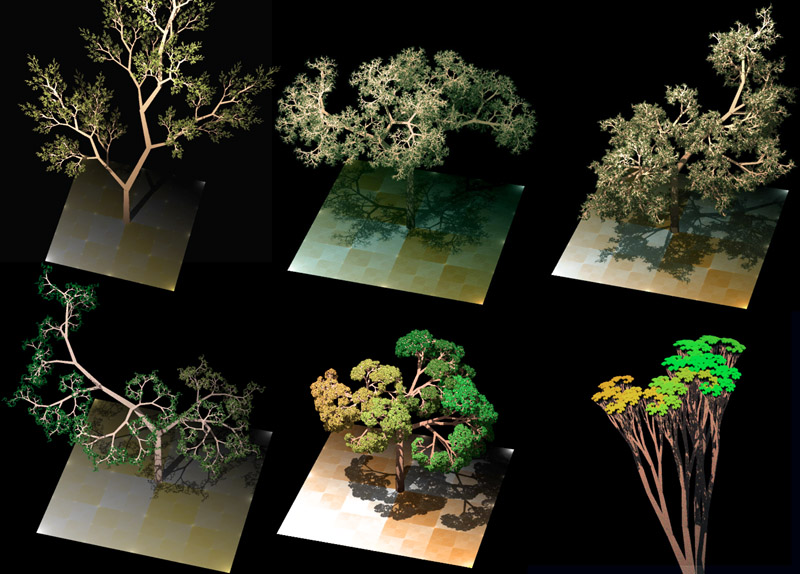
1. AI-powered Non-Player Characters (NPCs)
1. AI-powered Non-Player Characters (NPCs)
Experience lifelike interactions with AI-powered NPCs in modern games. These intelligent
characters are designed to mimic human-like behaviors, making the game world more immersive and
believable. NPCs can adapt to player actions, display emotions, and engage in realistic
conversations, adding depth and realism to the gaming experience. AI algorithms enable NPCs to
make decisions, solve problems, and react dynamically to changing circumstances, enhancing the
overall gameplay.
Furthermore, AI-powered NPCs can learn from player interactions and adjust their behavior over
time. This creates unique and personalized experiences for players, as NPCs evolve based on
individual gameplay patterns. The advanced AI algorithms behind NPC behavior models consider
various factors, such as game objectives, social dynamics, and environmental conditions,
resulting in dynamic and engaging interactions.
Overall, AI-powered NPCs bring a new level of realism and immersion to games, making the virtual
world feel more alive and responsive to player actions.


2. Procedural Content Generation
2. Procedural Content Generation
AI algorithms are now used to generate vast and diverse game worlds through procedural content
generation. This technique creates unique levels, landscapes, and objects dynamically, providing
endless possibilities for exploration. By leveraging AI, game developers can create expansive
and immersive environments without the need for manual creation of each element.
Procedural content generation utilizes algorithms that define rules and parameters to generate
game content on-the-fly. These algorithms can generate terrain, buildings, items, and even
quests or missions. Each playthrough becomes a new and fresh experience, as the AI algorithms
generate different combinations of content elements. This not only saves time and resources for
game developers but also ensures that players always have something new to discover.
Moreover, procedural content generation allows for greater scalability and adaptability. Game
worlds can be dynamically adjusted to accommodate different player preferences, playstyles, and
progression paths. This flexibility enhances replayability and makes games more enjoyable for a
wider range of players.


3. Realistic Physics and Simulation
3. Realistic Physics and Simulation
AI-powered physics engines enable realistic simulations of movement, collisions, and
environmental interactions in games. These engines use advanced algorithms to calculate and
simulate physics-based behaviors, resulting in lifelike movements and interactions between
objects and characters. Realistic physics adds depth and immersion to gameplay, making the
virtual world feel more authentic.
AI-powered physics engines take into account various factors, such as mass, velocity, and
friction, to accurately simulate how objects behave in different situations. This allows for
realistic reactions to actions like gravity, impact, and momentum. Players can experience the
thrill of realistic car physics, accurate ballistics in shooting games, or natural fluid
dynamics in water-based environments.
Furthermore, AI algorithms enable dynamic and adaptive physics simulations. Environmental
conditions can affect physics behaviors, such as wind affecting projectile trajectories or
destructible objects responding realistically to explosions. These simulations create more
engaging and interactive gameplay experiences, enhancing immersion and player satisfaction.


4. Intelligent Game Design and Adaptability
4. Intelligent Game Design and Adaptability
AI algorithms can analyze player behavior and adapt game mechanics accordingly. Game designers
can use AI to create dynamic and personalized experiences by adjusting difficulty levels,
generating tailored challenges, and offering adaptive gameplay. This allows games to cater to
individual player preferences, providing a more engaging and satisfying experience.
Through machine learning techniques, AI algorithms can analyze vast amounts of player data and
identify patterns, trends, and skill levels. This information can then be used to dynamically
adjust game parameters, such as enemy AI difficulty, puzzle complexity, or level design.
Adaptive gameplay ensures that players are consistently challenged but not overwhelmed,
promoting a sense of accomplishment and progression.
Intelligent game design also extends to personalized content recommendations. AI algorithms can
analyze player preferences and offer tailored suggestions for in-game items, quests, or
storylines. By understanding individual player interests, games can deliver more relevant and
captivating experiences, fostering player engagement and enjoyment.


5. Natural Language Processing and Voice Recognition
5. Natural Language Processing and Voice Recognition
AI technologies like natural language processing and voice recognition are transforming how
players interact with games. Players can now communicate with NPCs using voice commands or text
inputs, enabling more natural and intuitive interactions. AI algorithms interpret and respond to
player inputs, enhancing immersion and creating new gameplay possibilities.
Natural language processing enables games to understand and process human language, allowing
players to engage in conversations, give commands, or ask questions using their own words. Voice
recognition technology further enhances this interaction by converting spoken language into
actionable game commands. Players can have dynamic dialogues with NPCs, negotiate with
characters, or even control game actions through voice commands.
These advancements in AI-powered language processing and voice recognition open up new avenues
for immersive storytelling, interactive dialogues, and innovative gameplay mechanics. They
create a more fluid and natural way of interacting with games, blurring the boundaries between
the virtual world and reality.


6. Dynamic and Responsive Environments
6. Dynamic and Responsive Environments
AI algorithms can generate dynamic and responsive game environments that adapt to player actions
and decisions. These environments can include changing weather conditions, day-night cycles, and
evolving ecosystems. AI-driven systems analyze player behavior in real-time and dynamically
adjust the game world, creating a sense of realism and making the player's actions feel
impactful.
Dynamic and responsive environments can provide a more immersive and engaging gameplay
experience. For example, in open-world games, AI algorithms can simulate a living ecosystem
where animals hunt, migrate, and interact with each other based on player activities. Weather
conditions can change dynamically, affecting visibility, movement, and even gameplay mechanics.
Moreover, AI-driven systems can generate dynamic events or quests based on player actions,
ensuring that the game world feels alive and ever-changing. This level of interactivity and
responsiveness adds depth and replayability to games, as players can witness the consequences of
their decisions and explore different outcomes.
Overall, the AI revolution in gaming is transforming the way games are designed, played, and
experienced. With AI-powered NPCs, procedural content generation, realistic physics, intelligent
game design, natural language processing, and dynamic environments, games are becoming more
immersive, engaging, and personalized than ever before.
